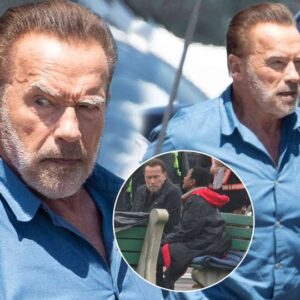The Battle of the North Cape, which took place on December 26, 1943, was a crucial naval confrontation between the British Royal Navy and the German battleship Scharnhorst in the Arctic waters off northern Norway.

In a bid to intercept and disrupt Allied convoys bound for the Soviet Union, the Scharnhorst was ambushed and engaged by a British fleet led by the battleship HMS Duke of York.
The battle culminated in the sinkig of the Scharnhorst, marking a significant victory for the Allies and effectively ending the threat posed by German surface raiders in World War II.
Historical Background
By the time the Battle of the North Cape took place in 1943, the Atlantic Ocean had already established itself as a crucial battleground in the context of World War II.
It wasn’t just any theater of war; it was the lifeline that kept Britain sustained and provided a pathway for the United States to project its rapidly growing military might into Europe.
Since the early days of the war, Germany recognized the strategic value of the Atlantic.
If they could effectively cut off Britain from its overseas allies, particularly from the vast resources and industrial power of the United States, they could potentially force a British surrender or at least severely weaken its war efforts.
To this end, the Germans deployed not only their notorious U-boat submarines but also surface raiders – warships designed to intercept and destroy merchant vessels.
Among the most formidable of these surface raiders were the battleships Scharnhorst and Gneisenau.
These two ships, with their combination of speed, armor, and firepower, posed a considerable threat to the Allied naval and merchant fleets.
Their presence in the Atlantic was not merely a tactical nuisance; it was a strategic challenge.
The mere possibility of an encounter with either of these ships could divert significant Allied resources, leading to more extended convoy routes, delays, and the need for more substantial escort fleets.
 The German battleship Scharnhorst pictured in 1939. Image by Bundesarchiv CC BY-SA 3.0 de
The German battleship Scharnhorst pictured in 1939. Image by Bundesarchiv CC BY-SA 3.0 deFurthermore, the earlier escapades of these ships, especially the infamous Channel Dash in 1942, had demonstrated their capability to wreak havoc and evade the British Royal Navy’s attempts to neutralize them.
The Channel Dash saw both the Scharnhorst and Gneisenau, along with the cruiser Prinz Eugen, move from Brest in France to German ports via the English Channel, effectively evading a massive British force set to intercept them.
This audacious act was not only a tactical success but a propaganda coup for the Germans, showcasing the apparent vulnerabilities in the Royal Navy’s control of its home waters.
However, by late 1943, the tables were beginning to turn. While the U-boat threat remained significant, the surface fleet of the Kriegsmarine was dwindling.
Gneisenau had been heavily damaged and was out of action, leaving Scharnhorst as the primary surface threat in the Atlantic.
The impending sortie of the Scharnhorst to attack convoys heading to Russia presented the Royal Navy with both a challenge and an opportunity.
If they could neutralize this threat, they could further tilt the balance of naval power in the Atlantic in their favor.
The Battle Of The North Cape
The stage for the confrontation at the North Cape was set amidst the backdrop of the treacherous Arctic waters, where the challenges of naval warfare were magnified by the harsh conditions of the environment.
The bitter cold, the capricious weather, and the near perpetual darkness of the winter polar night combined to create a scenario where the usual parameters of naval engagement were upended.
It was in these demanding circumstances that the cat-and-mouse game between the Royal Navy and the Scharnhorst began.
Early indications of the impending battle came when British naval forces detected the movements of the Scharnhorst as it sought to intercept Convoy JW 55B.
This convoy, like many others, was making the perilous journey from the UK to Russia, ferrying crucial supplies to aid the Soviet war effort on the Eastern Front.
Its significance was well understood by both sides. For the Germans, disrupting or destroying this convoy would not only dent the Allies’ material capabilities but also serve as a morale blow. For the British, protecting these lifelines was paramount.
In the early hours of the engagement, the Scharnhorst, under the able leadership of Captain Fritz Hintze, initially encountered a British cruiser squadron. This meeting was no mere skirmish; it was a calculated dance of firepower and maneuverability.
The cruiser squadron’s primary aim was to delay and harry the German battleship, buying time for the heavier elements of the British fleet to converge on its position.
 A map showing the Battle of the North Cape.
A map showing the Battle of the North Cape.
However, as the battle progressed, it became evident that the Scharnhorst was not merely up against a group of cruisers.
Vice Admiral Bruce Fraser, leading the British Home Fleet, had anticipated the German battleship’s moves.
He had brought with him a formidable force that included the powerful battleship HMS Duke of York, the cruiser HMS Jamaica, and a contingent of destroyers. The tables were about to turn on the Scharnhorst.
As the Duke of York entered the fray, the Scharnhorst found itself outgunned and outmatched.
The German battleship’s formidable 11-inch guns, while powerful, were up against the Duke of York’s even mightier 14-inch guns.
In a series of artillery duels that echoed through the icy waters, the British battleship managed to score several critical hits on the Scharnhorst, severely hampering its combat capabilities.
Realizing the escalating danger and the growing disadvantage, Captain Hintze made the fateful decision to withdraw, hoping to utilize the poor visibility and the challenging Arctic conditions to shake off pursuit.
But Vice Admiral Fraser was not to be so easily deterred. The British naval forces, sensing the vulnerability of the Scharnhorst, gave chase, setting the stage for the next phase of this dramatic Arctic showdown.
Sinking Of The Scharnhorst
The final hours of the Scharnhorst, the once-mighty jewel of the Kriegsmarine, were marked by desperate maneuvers, fierce combat, and a relentless pursuit by a determined enemy.
While the battle had already seen its share of intense confrontations, the climax was yet to unfold.
The Scharnhorst, even in its battered state, was a formidable opponent, and its end would come neither swiftly nor easily.
As the German battleship sought refuge in the icy expanses off the North Cape, the Royal Navy’s forces, under Vice Admiral Fraser, continued their relentless pursuit.
The British were acutely aware that allowing the Scharnhorst to escape and potentially repair would mean future threats to their convoys.
The chase was not just about neutralizing an immediate threat; it was about ensuring long-term security in the Atlantic and Arctic waters.
British destroyers played a pivotal role in this phase of the engagement. Utilizing their speed and maneuverability, they darted in and out of effective firing range of the Scharnhorst, launching torpedoes and harrying the already damaged battleship.
These agile vessels, often perceived as mere support units in larger naval confrontations, showcased their importance in this battle.
They managed to land multiple torpedo strikes on the Scharnhorst, crippling its propulsion and reducing its ability to defend itself effectively.
 HMS Duke of York during an Arctic convoy to Russia in 1942.
HMS Duke of York during an Arctic convoy to Russia in 1942.
With the Scharnhorst’s speed compromised and its combat capabilities dwindling, the larger vessels of the Royal Navy closed in.
The HMS Duke of York and the cruiser HMS Jamaica re-engaged the beleaguered German battleship.
A barrage of artillery fire and torpedoes rained down on the Scharnhorst, each hit bringing it closer to its inevitable doom.
Despite the overwhelming odds, the crew of the Scharnhorst fought valiantly, trying to repel the British onslaught and find a way out of the trap.
However, as the evening wore on and the combined firepower of the British fleet continued to pound the German battleship, its fate became clear.
At approximately 19:45, after enduring hours of relentless combat, the once-proud Scharnhorst succumbed to the icy waters of the Arctic.
The human cost of this climactic confrontation was stark. Of the Scharnhorst’s crew of over 1,900 men, only 36 were rescued from the frigid waters by British forces.
These survivors bore witness to the final moments of a vessel that had, for years, been a symbol of German naval might and had earned both respect and fear among Allied sailors.
Aftermath Of The Battle Of The North Cape
The sinking of the Scharnhorst was a clear signal that the balance of naval power had tilted decisively in favor of the Allies, particularly the British Royal Navy.
For years, the Kriegsmarine had used its surface raiders, like the Scharnhorst and Gneisenau, to challenge Allied dominance in the Atlantic.
With the Scharnhorst at the bottom of the ocean and the Gneisenau rendered non-operational, the threat posed by German surface raiders was largely neutralized.
This allowed the Allies to redirect resources and attention to other pressing threats, particularly the U-boat menace, and to further consolidate their control over vital sea routes.
The protection and safe passage of convoys, especially those bound for the Soviet Union, were of paramount importance. The supplies ferried by these convoys played a crucial role in sustaining the Soviet war effort against Nazi Germany.
The Scharnhorst had sought to disrupt this lifeline, but its sinking reaffirmed the Allies’ commitment and capability to protect these supply routes.
The uninterrupted flow of supplies bolstered the Soviet Union’s military campaigns, ultimately aiding in the pushback against German forces on the Eastern Front.
 Survivors from the Scharnhorst arriving at Scapa Flow after the Battle of the North Cape.
Survivors from the Scharnhorst arriving at Scapa Flow after the Battle of the North Cape.
The Battle of the North Cape wasn’t just a military victory; it was also a significant morale booster for the Allies.
The destruction of a prominent symbol of German naval power sent a clear message about the capabilities and resolve of the Royal Navy.
The news of the Scharnhorst’s sinking was widely disseminated, reinforcing among Allied troops and civilians the belief in the inevitability of an Allied victory.
Conversely, for Germany, the loss was not only material but also psychological, signaling the waning potency of the Kriegsmarine.
An often-underplayed facet of the Battle of the North Cape was the role of intelligence in shaping its outcome.
The British were not merely reacting to German maneuvers; they were, to a significant extent, anticipating them.
This was possible due to the intelligence garnered from the decryption of German naval communications.
The battle underscored the importance of codebreaking and intelligence in modern warfare, reinforcing the need for secrecy, innovation, and the constant evolution of communication methods.
In a strategic sense, the destruction of the Scharnhorst marked the end of the era of the German surface raider threat.
With the battleship’s sinking and the sidelining of other major German vessels, the focus of naval conflict in the Atlantic shifted.
The U-boat threat remained significant, but the nature of the naval challenge had changed. The large-scale, dramatic surface engagements of the early war years gave way to the stealthy, tense undersea warfare of the U-boat campaigns.
News
Miley Cyrus N-de & S*xy Collection (10 Photos)
Miley Cyrus, the American Fappening celeb, is in a new set of nude and sexy pics, showin’ off her stuff! Instagram: https://www.instagram.com/mileycyrus/
Exactly 6 years ago, Taylor Swift’s “MV that made the audience talk a lot” Delicate was released globally.
After exactly 1 year and 4 months of release, Taylor Swift’s “Look What You Make Me Do” has officially reached 1 billion views on YouTube. On December…
Sylvester Stallone’s model daughter Sistine, 17, looks just like her mother Jennifer Flavin, 46, as they step out in matching denim shorts in Antibes
Sylvester Stallone is currently soaking up the sun in Antibes, France, with his stunning wife and daughters and the family resemblance is clear to see. The Rocky…
Miley Cyrus’ Fans Speculate That She Got ‘Plastic Surgery’ After Seeing Before-And-After Photos From 2012 To 2024
Miley Cyrus has evolved from a Disney darling to a full-fledged rockstar, and many of her fans feel like they’ve grown up with her. Over time, the “Flowers”…
Arnold Schwarzenegger spotted filming Netflix series in Elora
Arnold Schwarzenegger, the illustrious bodybuilder, action star, and former governor, can now add another highlight to his extensive résumé: a visit to Elora. Schwarzenegger was spotted on…
Arnold Schwarzenegger Was Honored As An Outstanding Bodybuilder Who Redefined The Perfect Physique
Arnold Schwarzenegger, the legendary seven-time Mr. Olympia, stands as the epitome of the bodybuilding realm, forever etched in history as the most influential bodybuilder of all time….
End of content
No more pages to load











